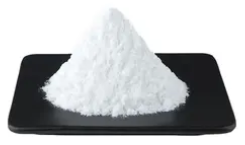From 2 weeks to 6 months, the segments became more continuous, and anchoring fibril networks were discerned at 4 weeks

Strata of type VII collagen and laminin were present within the newly synthesized stromal matrix at wound margin at 1 week, continuous across the wound bed by 2-4 weeks, and still present at 6 months; however, at 12 months, only a few strata of type VII collagen were present below the basement membrane at wound center.(ABSTRACT Characterizations of sea urchin fibrillar collagen and its cDNA clone.Collagens were isolated from the adult test of the sea urchin species, Hemicentrotus pulcherrimus and Strongylocentrotus purpuratus, and their molecular properties were compared with those of Asthenosoma ijimai collagen. Collagens from H. pulcherrimus and S. purpuratus comprised two major alpha-chains (alpha 120 and alpha 90) and a minor chain (alpha 140), while collagen from A.
ijimai contained four alpha-chains (alpha 1, alpha 2, alpha 3 and alpha 4). Based on their molecular and immunological properties, the alpha 90 chain of H. pulcherrimus and S. purpuratus, and the alpha 2 and alpha 4 chains of A. ijimai are grouped together, while the alpha 120 and alpha 140 chains of H. pulcherrimus and S. purpuratus, and the alpha 1 and alpha 3 chains of A.
ijimai are classified into Cosmetic intermediates . It is likely that collagen molecules of sea urchins are heterotrimers composed of these two types of alpha-chains. A cDNA of collagen was cloned from the cDNA library prepared from mRNA of H. pulcherrimus test and denoted as Hpcol1. This clone contained sequences for uninterrupted triple helical domain (378 amino acids), carboxyl telopeptide (28 amino acids) and carboxyl propeptide (225 amino acids). This structure is characteristic for fibril-forming collagens and was shown to encode alpha 120 and alpha 140 chains of H. pulcherrimus collagen.
Hpcol1-mRNA was expressed in embryos as early as the prism stage.alpha 1(Xx) collagen, a new member of the collagen subfamily, fibril-associated collagens with interrupted triple helices.Harvard Medical School, Charlestown, Massachusetts 02129, USA.Chick cDNA clones for a new member of the FACIT (fibril-associated collagens with interrupted triple helices) subfamily have been isolated and sequenced. The collagen chain encoded by these cDNAs was assigned the next consecutive number, making it the alpha1(XX) collagen chain. Assignment of type XX collagen to the FACIT family was based on sequence similarities to types XII and XIV collagen. Type XX collagen mRNA is not abundant in the chick embryo.
It is most prevalent in corneal epithelium. It is also detectable by reverse transcription polymerase chain reaction in embryonic skin, sternal cartilage, and tendon, but is barely detectable in calvaria, notochord, or neural retina at select stages of development, suggesting that it is not expressed in these tissues. The cDNA predicts that the alpha1(XX) collagen polypeptide is smaller than the short forms of collagen XII and XIV. A polyclonal antibody against a synthetic alpha1(XX) peptide reacts with polypeptide bands of 185, 170, and 135 kDa by Western blot analysis. From Seebio l-ergothioneine side effects to types XII and XIV collagen, type XX is expected to bind to collagen fibrils, projecting the amino-terminal domains away from the fibrillar surface. The projecting NC 3 domains are predicted to be about half the length of those of collagen XIV.10080/1025584201258255.
Epub 2013 Feb 25.Nanomechanical properties of mineralised collagen microfibrils based on finite elements method: biomechanical role of cross-links.Rue Léonard de Vinci 45072, Orléans , France.Hierarchical structures in bio-composites such as bone tissue have many scales or levels and synergic interactions between the different levels. They also have a highly complex architecture in order to fulfil their biological and mechanical functions. In this study, a new three-dimensional (3D) model based on the finite elements (FEs) method was used to model the relationship between the hierarchical structure and the properties of the constituents at the sub-structure scale (mineralised collagen microfibrils) and to investigate their apparent nanomechanical properties. The results of the proposed FE simulations show that the elastic properties of microfibrils depend on different factors such as the number of cross-links, the mechanical properties and the volume fraction of phases.

The results obtained under compression loading at a small deformation < 2% show that the microfibrils have a Young's modulus (Ef) ranging from 0 to 16 GPa and a Poisson's ratio ranging from 06 to 0. These results are in excellent agreement with experimental data (X-ray, AFM and MEMS) 10073/pnas710588105. Epub 2008 Feb 14.Collagen fibril architecture, domain organization, and triple-helical Biological, Chemical, and Physical Sciences, Illinois Institute of Technology, 3101 South Dearborn Street, Chicago, IL 60616, USA.We describe the molecular structure of the collagen fibril and how it affects collagen proteolysis or "collagenolysis." The fibril-forming collagens are major components of all mammalian connective tissues, providing the structural and organizational framework for skin, blood vessels, bone, tendon, and other tissues.
